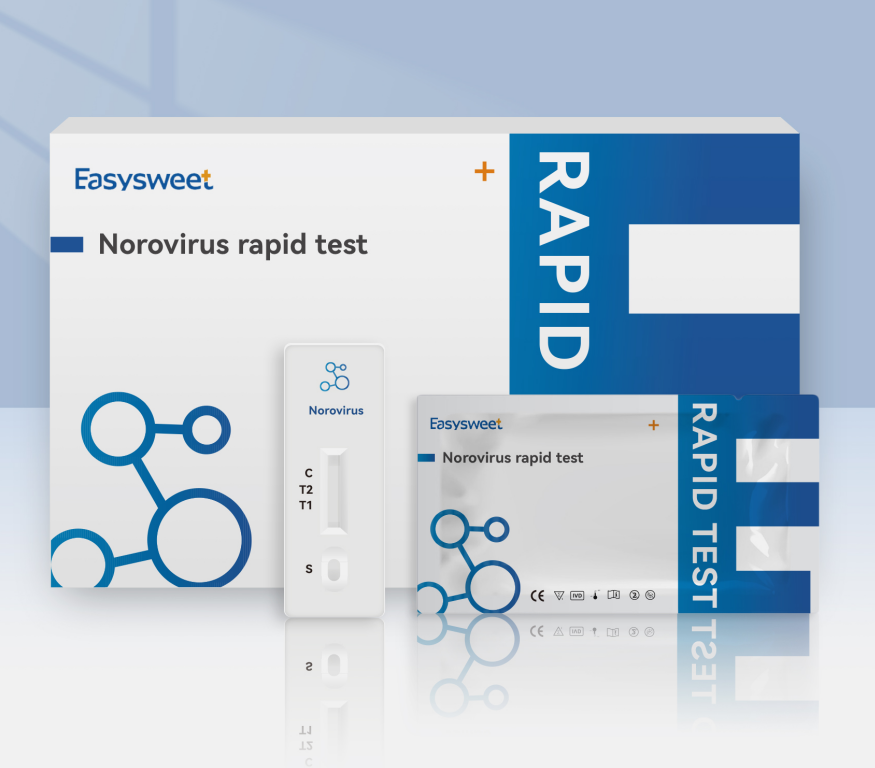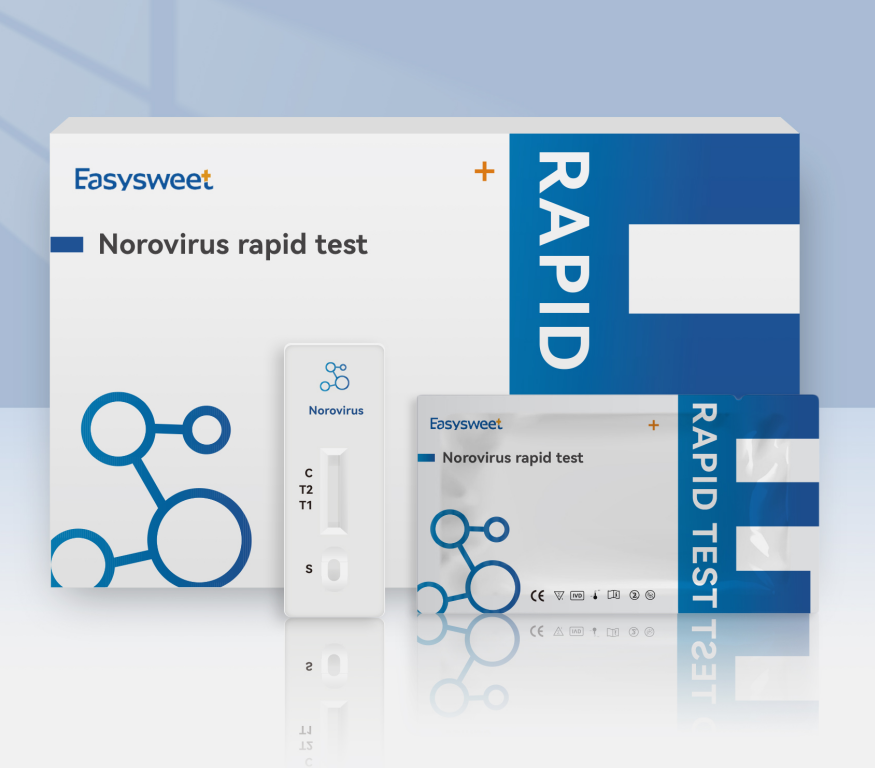Every November to March of the following year is a period of high incidence of norovirus. Recently, some schools and kindergartens have also experienced outbreaks of acute gastroenteritis caused by norovirus infection, which has seriously endangered the health of teachers and students. Easysweet The Norovirus rapid test usage scenario is where children are densely populated.

What is Norovirus?
Norovirus, also known as Norovirus or Norwalk virus, is a common calicivirus that causes non-bacterial gastroenteritis. The virus is genetically diverse and highly mutated. New mutations appear every few years. The leading cause of sporadic and global outbreaks of epidemic gastroenteritis.
Norovirus infection is characterized by:
1. Highly contagious: Norovirus can be transmitted through physical contact, water, food, breathing, etc.
2. Short incubation period: usually the incubation period is 24-48 hours, the shortest is 12 hours, and the longest is 72 hours.
3. The onset after infection is mainly mild: the most common symptoms are diarrhea and vomiting, followed by nausea, abdominal pain, headache, fever, chills and muscle aches.
4. Strong virus resistance: Norovirus has high tolerance to harsh environments, has low temperature resistance, acid resistance and other characteristics, and is not easy to inactivate.
5. Seasonal: It can occur all year round, but the peak incidence is in autumn and winter, that is, from November to March of the following year.
6. Strong mass incidence: most of them are collective diseases, especially in crowded places such as schools and kindergartens.
7. Children are susceptible to infection: Preschool children are especially susceptible to norovirus infection. The detection rate of norovirus among children with diarrhea under the age of 5 in my country is as high as 15%.
8 No specific drug or vaccine: There is no specific drug or vaccine against Norovirus yet.
Easysweet Norovirus rapid test usage scenarios
1. Develop infectious disease prevention and control plans and emergency plans. Schools and kindergartens should formulate infectious disease prevention and control plans and emergency plans as required, and effectively implement the morning and noon inspections for teachers and staff, the registration and tracking system for absenteeism/absence due to illness, the inspection system for class resumption certificates, and the reporting of infectious disease outbreaks. Early detection Epidemic, early reporting and prevention and control measures.
2. Isolate the sick person in time. If employees or students have symptoms such as vomiting and diarrhea, they should seek medical attention in time, and are not allowed to go to work or class while sick. Patients will be quarantined until 3 days after symptoms disappear before resuming classes. Food processors, nurses, kindergarten nurses and other patients who are engaged in service work can return to work after 2 negative stool tests 3 days after symptoms disappear.
3. Report the outbreak in a timely manner. The school doctor/garden doctor should promptly report the epidemic situation to the district health department and the primary and secondary school health centers in the jurisdiction after the outbreak, and carry out further data reporting and case management according to the guidance of professionals.
There are currently no effective antiviral drugs or vaccines against Norovirus, so using the Easyweet Norovirus rapid test is the best initial test result.
If you are infected with norovirus, try not to have close contact with healthy family members, especially not to cook or take care of the elderly and children. At the same time, you should actively isolate yourself at home until two days after symptoms disappear to avoid infecting others. If you are interested in importing Easysweet Norovirus rapid test, please contact us without hesitate.


